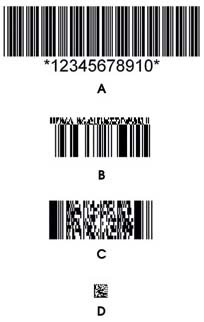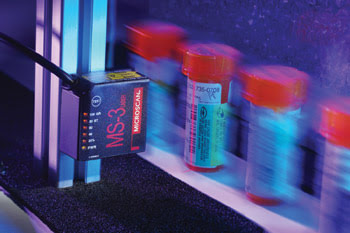Susan Snyder, Microscan Systems Inc.
The benefits that bar coding can bring to the medication administration process are widely recognized. Bar codes provide the most efficient method of identifying the drug, the patient, and the appropriate time and method of administration. But with the new Food and Drug Administration (FDA) ruling mandating bar codes on all drug packages — and with many health care items too small to accommodate traditional linear bar codes, such as tablets in blister packs — pharmaceutical companies will most likely turn to new, space-efficient bar codes such as 2-D matrix codes and Reduced Space Symbology (RSS).
The traditional linear bar code can best be described as a machine-readable symbol that resembles a series of parallel bars and spaces. The data in the symbol is encoded by predetermined height and width patterns defined by the selected symbology. This data is then extracted from the symbol by shining a light — such as the laser diode in a scanner — on the symbol and measuring the amount of light reflected by the dark and light elements of the bar code. The bars reflect the least amount of light, and the spaces reflect the most. Because only the widths of the bars and spaces are important in decoding a linear bar code, single-row bar codes are considered one-dimensional.

Bar codes come in various sizes and configurations. Code 39 bar codes (A) are commonly used for inventory and industrial applications. RSS/CS codes (B) are 2-D, space-efficient data strings that can include information about the vendor, package size and expiration dates. A PDF417 code (C), which resembles a set of stacked bar codes, also inlcudes more data than standard 1-D bar codes. Matrix codes (D) are particularly useful for space-constrained packages.
Both the height and width of the symbol are needed to decode a two-dimensional code. These codes can be grouped into two categories: stacked linear and matrix. The former are rows of width-modulated bar codes stacked directly atop each other, in which each row is the same length and resembles a single-line bar code. The latter are two-dimensional patterns of light and dark data cells in the shape of squares, circles or polygons.
RSS is a one-dimensional linear bar-code system, compact enough to fit in small spaces, that includes a product’s National Drug Code number — a 10-digit string that identifies information such as the product’s labeler, vendor, package size and recommended dosage form. Further, RSS codes can be stacked with two-dimensional Composite Symbology (CS) codes, space-efficient symbols that contain additional data such as primary production identification information.
Laser scanning is the most common method for decoding linear bar codes. As the laser diode passes over the dark and light elements of the bar code, the photodiode in the scanner measures the amount of light that each reflects. The photodiode converts the light energy into electrical energy, which is transformed into a digital signal and decoded, based on the symbology selected and the data produced.
Imagers process bar codes differently. Although a laser scanner processes counts across a single scan line, machine vision systems use an array of gray-scale pixels to process the symbol. Instead of a laser diode, imagers rely on LEDs for illumination. In a smart camera, the LEDs are embedded in much the same way as a laser diode is inside a scanner. A CCD or CMOS camera collects the photon energy reflected from the object of interest and converts it into an analog signal, which is then converted to the digital gray-scale value for the CPU to process.
On pharmaceutical packaging lines, laser and imaging technologies both have their advantages and limitations. Because laser scanners are not limited by the transfer rate of the imaging technology, they can process bar codes much faster than machine vision systems: A scanner can read linear bar codes at speeds of up to 2000 decodes per second, while smart cameras are limited to 60.

Laser scanners can inspect pill bottles at rates of up to 2000 decodes per second.
But laser scanners cannot read 2-D matrix codes, introducing problems with CS codes. The composite component is sensitive to the tilt of the laser beam, so drug companies have to align their lasers to scan through the minuscule rows of a CS code after it has undergone sealing deformation — a challenge, especially at high speeds.
Because they offer more software flexibility, machine vision systems provide distinct advantages over laser scanners for reading symbols on challenging surfaces such as the foil packaging on blister packs. Threshold settings can be adjusted to compensate for low-contrast images or highly reflective surfaces. Smart cameras also can read both linear and 2-D codes, allowing manufacturers to use the same product to read multiple code
Meet the author
Susan Snyder is market development manager for Microscan Systems Inc. in Renton, Wash.